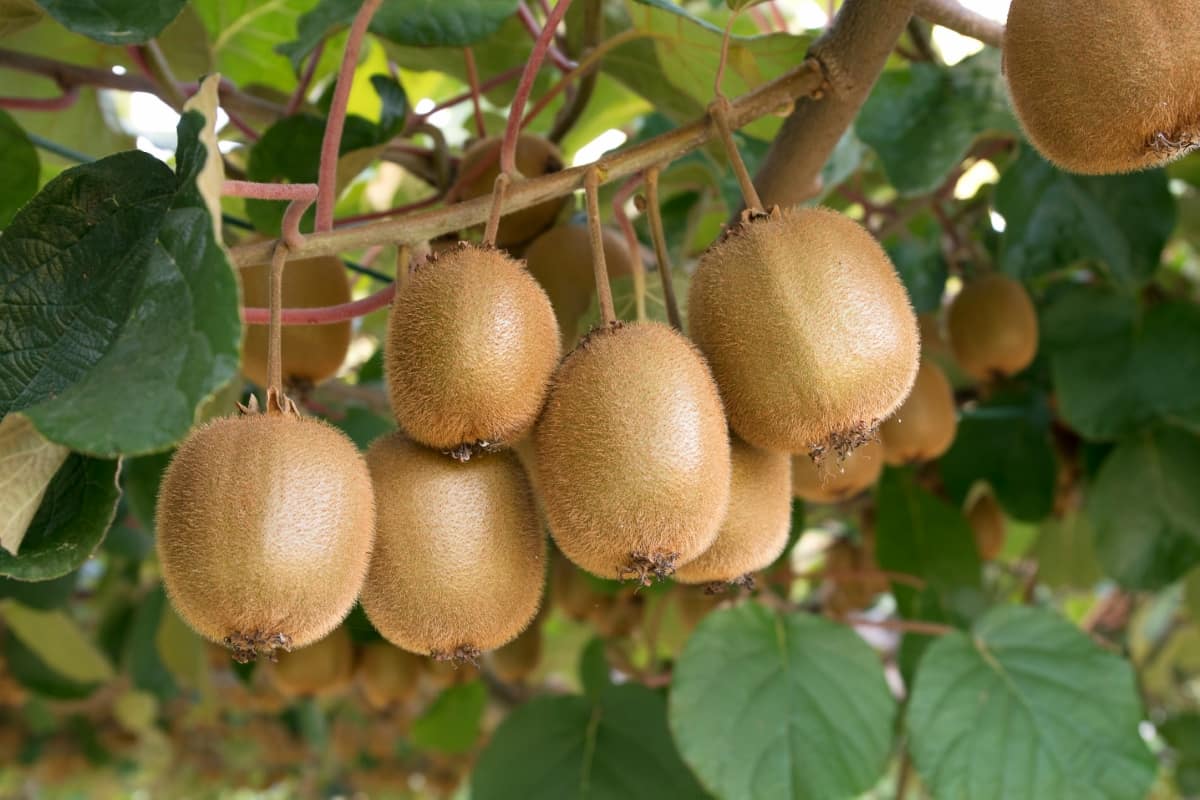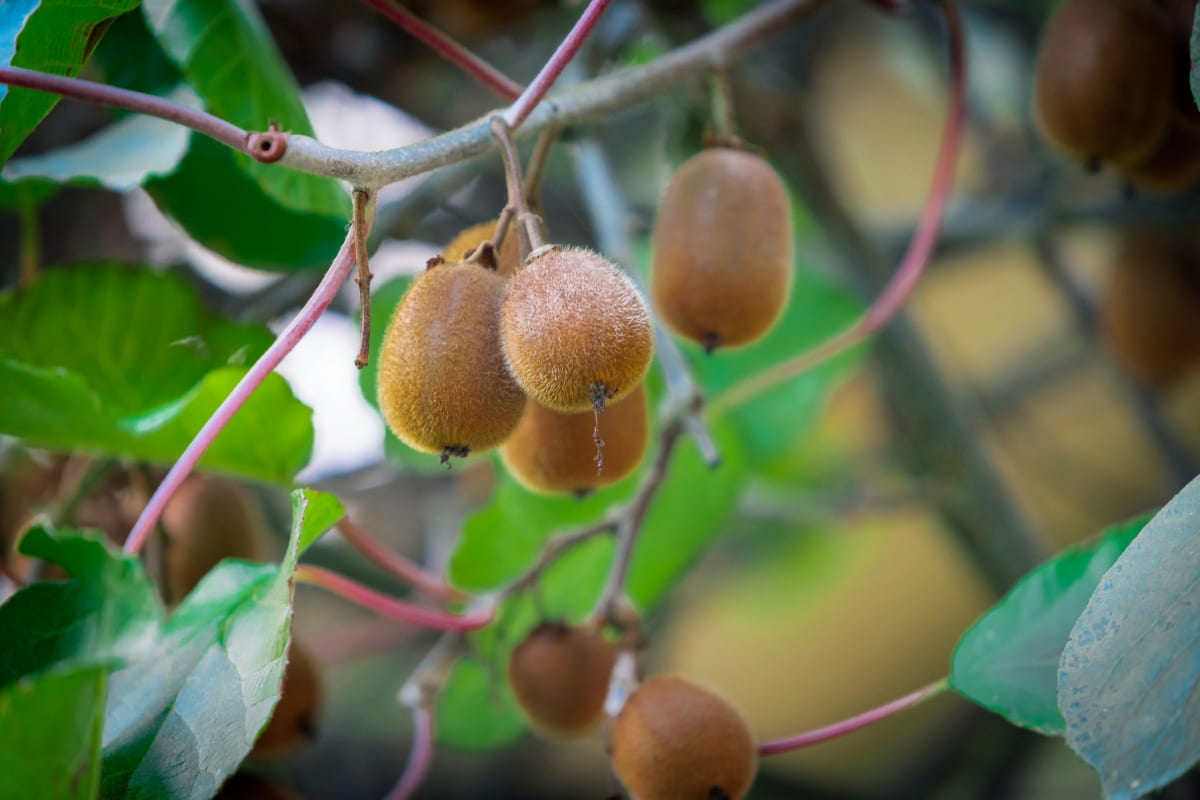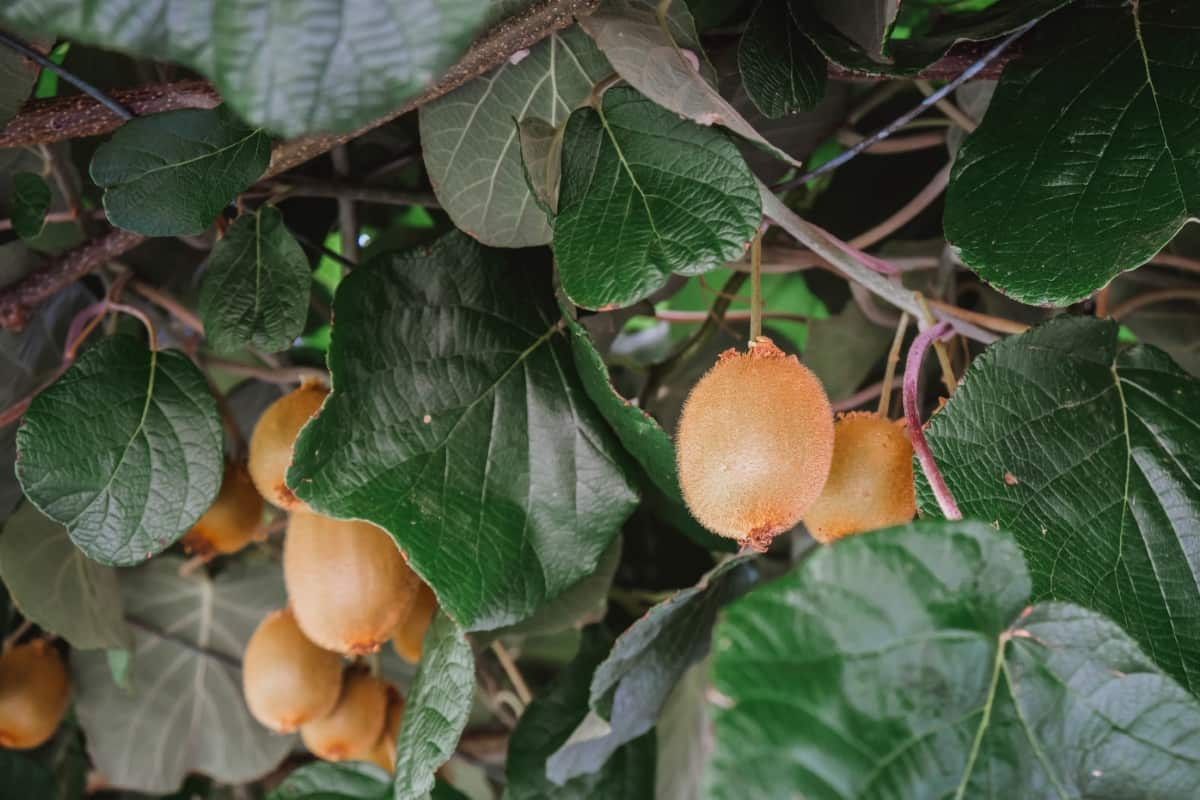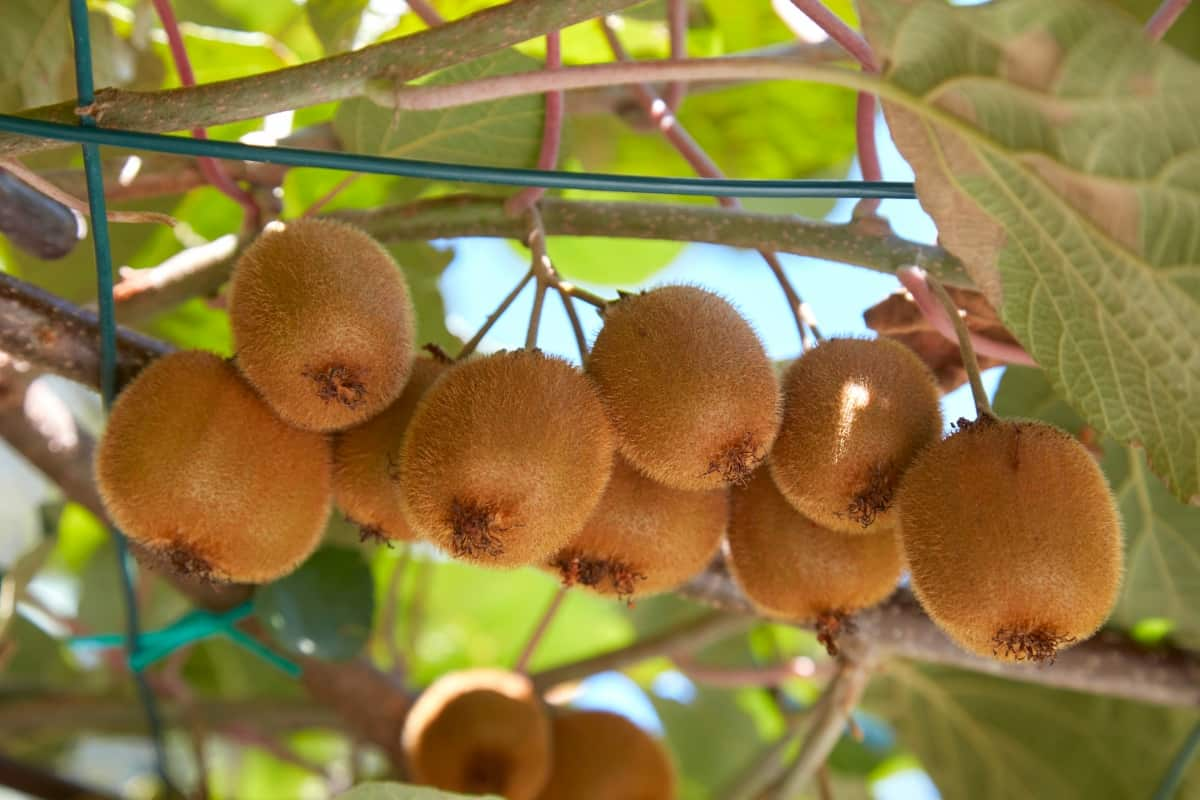Kiwi plants are susceptible to various pests that can harm the plant’s fruit, leaves, and overall health. These pests include insects, fungi, and other organisms that can cause accountable damage if left unchecked. If you’re a kiwi enthusiast and want to enjoy a thriving kiwi garden orchard, learning how to control kiwi pests effectively and naturally is essential. This article will explore various methods for managing kiwi pests using natural and organic treatments.

How to Control Kiwi Pests Naturally
Kiwi Pests: Identifying the Most Common Pests and Their Impact on Your Crop
Among the most common kiwi pests are the Brown Headed Leaf Roller and Green Headed Leaf Roller. These insects feed on kiwi leaves, causing significant damage to the plant’s photosynthetic capacity. Greedy Scale, another notorious kiwi pest, attaches itself to the vines, sucking out vital nutrients and weakening the plant.
Passion Vine Hoppers feed on kiwi vines, introducing diseases in the process, further compromising the plant’s well-being. Two-spotted Spider Mites, Thrips, and Root Knot Nematodes are also prevalent in kiwi orchards, causing stress to the plants and reducing fruit quality. These pests can be challenging to manage, often requiring integrated pest management strategies to minimize their impact.
Using Neem Oil to Control Kiwi Pests: A Safe and Effective Method
Neem oil is an effective method for controlling kiwi pests naturally. Derived from the neem tree, it acts as a natural pesticide. When applied to kiwi plants, neem oil disrupts various pests’ feeding and reproductive cycles, including aphids, scale insects, and mites. It’s biodegradable and non-toxic to humans, pets, and beneficial insects, making it an eco-friendly option. Regular neem oil applications create a protective barrier, reducing the risk of pest infestations while promoting a healthier kiwi crop. Its safety and efficiency make neem oil a valuable tool for organic and sustainable pest management in kiwi cultivation.
The Role of Beneficial Insects in Controlling Kiwi Pests: Introduction of Predatory Insects
Predatory insects like ladybugs, lacewings, and parasitic wasps are introduced to the kiwi orchard to target and consume harmful pests like aphids, mites, and caterpillars. These natural predators help maintain a balanced ecosystem by reducing the population of destructive insects minimizing the need for chemical pesticides.
In case you missed it: How to Control Hydroponic Tomato Pests and Diseases Naturally: How to Get Rid of Them with Natural and Organic Treatment

Their presence fosters sustainable and environmentally friendly pest management while preserving the health and vitality of the kiwi crop. This integrated pest management approach harnesses the power of nature to keep pest populations in check, promoting healthier and more productive kiwi plants.
Companion Planting: How Planting Certain Plants Together Can Deter Kiwi Pests
For instance, aromatic herbs like rosemary and basil can discourage insect pests due to their strong scents. Marigolds emit compounds that repel nematodes in the soil. Nasturtiums attract aphids away from kiwi plants, serving as sacrificial hosts. Additionally, planting cover crops like clover or buckwheat can enhance soil health and attract beneficial insects, aiding in natural pest control. This approach creates a symbiotic environment where pest-prone plants benefit from the proximity of pest-repelling companions, reducing the need for chemical interventions and fostering a healthier kiwi ecosystem.
Crop Rotation: How Rotating Your Kiwi Crop Can Help Control Pests
By periodically changing the location of kiwi plants within the orchard, you disrupt the life cycles of kiwi-specific pests and diseases that may have built up in the soil. This practice prevents the pests from establishing a permanent habitat and reduces their impact. Rotating with non-host crops also improves soil health, as different plants have varying nutrient needs and contributions. By decreasing pest pressure and enhancing soil quality, crop rotation is a sustainable strategy that supports long-term kiwi production while minimizing the reliance on chemical treatments.
Using Diatomaceous Earth to Control Kiwi Pests: A Non-Toxic and Organic Method
Diatomaceous earth, a natural and non-toxic option, is a valuable method for controlling kiwi pests. Composed of finely ground fossilized diatoms, it has microscopic, sharp edges that pierce the exoskeletons of insects. When pests pass over the diatomaceous earth(DE), it dehydrates and ultimately kills them. This organic pest control is safe for humans, animals, and beneficial insects. It is particularly effective against crawling pests like ants, slugs, and snails that may harm kiwi plants.
In case you missed it: How to Control Okra Bacterial Wilt Naturally: How to Get Rid of This with Natural and Organic Treatment

Traps and Barriers: How to Use Traps and Barriers to Control Kiwi Pests
Traps and barriers are practical tools in the integrated pest management of kiwi crops. Yellow sticky traps, for example, attract flying insects like fruit flies and aphids, preventing them from reaching the plants. Physical barriers like row covers or netting safeguard kiwi plants from bird and insect damage. Pheromone traps can monitor and disrupt the mating of specific pests. These methods provide a non-toxic and environmentally friendly approach to pest control, reducing the need for chemical pesticides.
Biological Control: How to Use Parasitic Wasps to Control Kiwi Pests
Parasitic wasps are valuable allies in controlling kiwi pests. These tiny, non-stinging wasps target harmful insects like aphids, caterpillars, and whiteflies. To deploy them, purchase commercially available parasitic wasps or attract native species by planting nectar-rich flowers. Release them strategically in the kiwi orchard when pest populations are low, ensuring a sustainable food source.
These wasps lay eggs inside or on the pests, eventually leading to their demise. Employing parasitic wasps as part of an integrated pest management strategy minimizes reliance on chemical pesticides, promoting a healthier kiwi ecosystem while effectively controlling pest populations.
Integrated Pest Management (IPM): A Holistic Approach to Controlling Kiwi Pests
Integrated Pest Management (IPM) is a comprehensive strategy for managing kiwi pests, emphasizing prevention, monitoring, and various eco-friendly techniques. It combines cultural practices like crop rotation, pruning, and maintaining healthy soil with biological control through beneficial insects and natural predators. Traps, barriers, and non-toxic remedies like neem oil are used, and chemical pesticides are a last resort. Regular monitoring and early pest detection are vital, enabling precise and targeted interventions.
In case you missed it: How to Control Lemon Pests Naturally: How to Get Rid of Them with Natural and Organic Treatment

Conclusion
In conclusion, using natural and organic treatments for kiwi pest control is both effective and environmentally responsible. By incorporating techniques such as beneficial insects, neem oil, and companion planting, growers can combat pests while maintaining the integrity of their ecosystem. This holistic approach not only safeguards the health of kiwi plants but also contributes to sustainable and chemical-free crop management.
- Deworming Schedule for Dogs/Puppies: A Beginners Guide
- How to Prevent and Control Parasites in Goats
- Beneficial Insects in Pest Management
- Natural Solutions for Pest Control in Flower Gardens
- Types of Fungicides Used in Agriculture
- Common Issues in the Fruit Development Stage of Pomegranate Farming
- Fruit Development Issues in Papaya: Easy Solutions and Treatment
- Soil-Borne Diseases and How to Protect Your Plants
- Practices to Prevent Disease Spread in the Garden